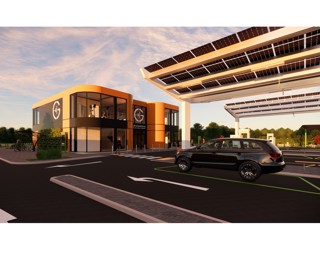Fears of a ‘price correction’ for used electric vehicles (EVs) have been played down by pricing experts.
It comes after the boss of the UK’s largest leasing, Lex Autolease, warned that plug-in residual values (RVs) could dip dramatically, due to their high resale value when compared with diesel or petrol alternatives.
Richard Jones, managing director of Lex Autolease and Black Horse, said: “The big issue that still faces EVs goes back to the list price.”
He explained: “Because list prices are so much higher, the drive is to set the RVs quite strongly as a percentage of those list prices. It means the RV relative to an ICE (internal combustion engine) vehicle is still higher.”
Jones believes that’s a problem for the used market. “If that pervades at scale then at some point it’s going to lead to a correction and that then damages the adoption curve of EVs in the market,” he said.
BuyaCar.co.uk says average prices paid for a used battery electric vehicle (BEV) are significantly higher than for petrol or diesel cars, with only hybrids above them. Customers, it says, are paying an average of around £2,000 more for an EV versus a comparable diesel and £6,000 more than for a petrol car.
Khaled Shahbo, managing director for Enterprise Rent-a-Car UK and Ireland, who was speaking alongside Jones in a panel debate at the ‘Fleets in Charge’ virtual conference organised by the British Vehicle Rental and Leasing Association (BVRLA), shares his RV concerns.
He said: “People aren’t quite sure how to personally value the diminished capability of an EV. We don’t know how battery wear will affect the value of that vehicle.
“We know in ICE vehicles because we have decades and decades, if not a century, of history in our armoury. But we don’t know what a three-year-old or a five-year-old battery means and, until we do, there’s going to be a certain amount of apprehension.”
Performance retained
Shahbo acknowledged that people were overcoming those concerns, while longer manufacturer warranties are helping along with battery data showing performance is being retained after several years of use.
Data from Renault shows that 99.5% of the batteries are above the 70% capacity warranty threshold after 10 years.
Dylan Setterfield, head of forecast strategy at pricing experts Cap HPI, says the higher RVs in absolute terms enjoyed by EVs are not simply because they have higher list prices. Low volumes are also having an impact.
“Their values are also supported by carefully managed remarketing strategies by the manufacturers, keeping used examples in the dealer network or negotiating bulk deals for niche second-hand use,” he said.
However, he added that, with consumer confidence taking a hit, the high price point of BEVs and PHEVs mean they are struggling compared with used ICE cars, and their price premium is reducing.
He expects this trend to continue for at least the next year. Further into the future, the increasing volume of used BEVs and PHEVs will generate pressure on RVs.
Values of older used models may also come under pressure if newer models come with better technology or a cheaper list price.
“We expect the current price premium of used BEVs and PHEVs will gradually reduce over time,” he continued. “This could be viewed as a market correction, but we expect to see a steady decline in values and there should be no cliff edge.”
Price realignments
Philip Nothard, insight and strategy director at Cox Automotive, also expects the used market to undergo a series of price realignments to take account of the changing range capabilities of vehicles.
“As a used vehicle, these offer different propositions to the user and, in return, cause various levels of demand and value,” he said.
“Therefore, we would expect to see a more coherent residual value structure for the new phase of EVs, which offer the consumer the distance capabilities of the equivalent ICE models while also taking into consideration the total cost of ownership due to the reduced running costs.”
Stuart Pearson, chief operating officer for UK remarketing at BCA, concluded: “It is the balance of supply and demand that drives values and, if this balance changes, this will affect values.”
This article was first published in the January edition of Fleet News.























Login to comment
Comments
No comments have been made yet.